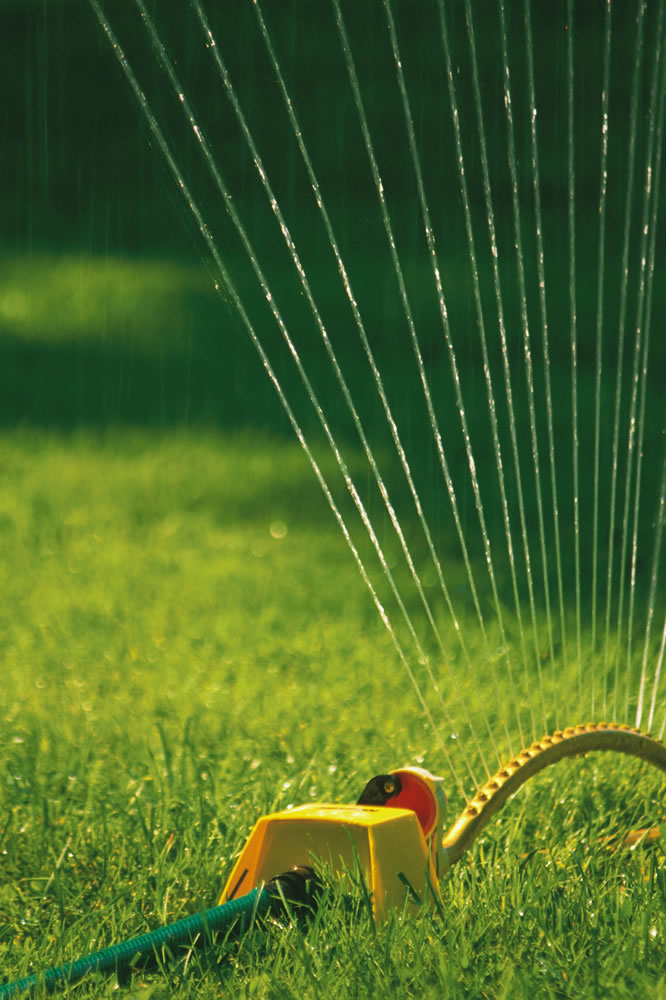If it happens to be raining hard when you read this, my words might make you want to pelt me with ripe tomatoes — if you had them yet. Still, I’ll say it: Timely watering can eke the best plant growth from any plot of ground in any season.
Even in wet seasons, watering usually helps, because the water that falls then isn’t all available to plants. Roots need air to function, and a “cats and dogs” rain temporarily drives all the air out of the ground. Roots start to breathe and function again only after gravity has pulled excess water deeper into the ground. A timely watering will spur plant growth in those drier periods between rains.
Watering triage
This doesn’t mean you need to set up elaborate irrigation systems to water every maple, marigold, lettuce leaf and lawn grass. Such a degree of control would take too much of what is natural out of gardening.
Too much perfection in watering can even cause trouble in some settings, such as when it spurs invasion of aggressive grasses into a wildflower garden. Depending on what you grow, how you take care of your plants, and general rainfall patterns in the region, most of your yard might not justify being watered.
The part of the garden that cries out most for timely watering almost everywhere is the vegetable garden. Most vegetables are annual plants, so they have their thirst quenched by just a season’s growth of roots. What’s more, we want our vegetables tender and juicy, qualities that come from cells plumped full of water.
Not all vegetables, though, are equally demanding of water. Lettuce and radishes do reach perfection only in consistently moist soil, but tomatoes actually taste best if kept slightly dry.
Let’s sidle over to the flower bed now. Annual flowers need water until their roots establish themselves. Beyond the establishment phase, though, there are plenty of annual, biennial and perennial flowers that grow well with little or no watering. Some such flowers that come to mind are Russian sage, potentilla, pinks, coneflower, lavender and yarrow, as well as globeflower, strawflower and other flowers known to dry well after cutting.
Of course, if your goal is an English flower garden lush with roses and spires of delphinium, supplemental watering is probably needed. In that case, moving your garden to England also might be justified.
Like annuals, newly planted or young trees, shrubs and vines need to be watered until they get established. These plants also eventually get along fine without supplemental watering if plants are chosen that are adapted to their locations.
Smaller plants establish themselves more quickly than larger plants, so think twice before planting a 10-foot tree; it will require years of timely, abundant watering.
Making the most of water
Whether you’re growing vegetables, flowers or trees, how you care for the soil can have as much impact on satisfying your plants’ thirst as can watering itself.
Applying plenty of organic materials, such as compost, leaves and straw, makes any soil better able to sponge up extra moisture.
Another way to preserve moisture is to avoid digging or tilling — these activities disrupt capillary water connections in the soil and “burn up” those water-retaining organic materials.
Laid on top of the ground as mulches, those organic materials prevent evaporation of water from the ground’s surface at the same time they enrich the soil with organic matter and obviate the need for tilling to control weeds.
Whenever some plants justify watering because of a freak dry season or just because of the kinds of plants they are, do it right. Figure, on average, on plants needing a 1-inch depth of water per week, as rainfall or sprinkler-fall, measured into a straight-sided container. If you use drip irrigation, a watering can or a hose, translate that figure into a half-gallon per square foot of planted area or estimated spread of roots. Double or triple that amount for deep-rooted plants, such as larger trees.
If you’re going to stand there with hose in hand, supplying that much water is going to take you longer than you think. No matter how you water, dig down into the soil occasionally and check for moisture yourself.



